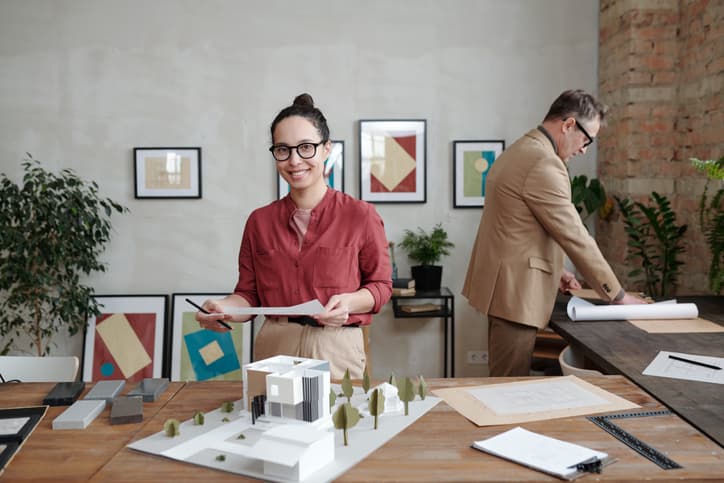
By Rich Quelch, Global Head of Marketing, DiD

According to a recent survey, improving supply chain efficiency is the top priority for businesses navigating the post-pandemic landscape – with the physical and financial disruption of the last year simply magnifying existing inefficiencies.
Underperforming areas of the supply chain are now firmly under the spotlight and businesses are focused on finding new ways to cut costs while protecting quality and keeping efficiency high.
And streamlining the packaging design and development is one way businesses can achieve this goal. With substandard packaging, businesses risk faulty or inferior products, damage in transit, reduced customer satisfaction and the resulting challenges in product returns.
So, it’s critical to identify and work with knowledgeable, credible and collaborative partners in this space.
A proven track record
Businesses looking to partner with a marketing agency or legal firm will always prioritise one quality – industry experience. This specialist knowledge not only speeds up the briefing process but also aids collaboration in any creative, design, development and compliance stages.
And the same should go for those looking for a packaging partner. Working with providers that have a track record in delivering innovative, secure and compliant packaging will save costs in the long run, mean you’ll be market-ready sooner and your product will perform at its best.
Firms can work together in the design stage to create solution-based designs that deliver the safety and intuitive access that improves the consumer experience. Similarly, knowledge of quality materials keeps businesses at the cutting-edge of the market.
Those assessing the suitability of potential partners should request case studies that demonstrate previous work in the sector. This not only sets expectations around the quality of final products but also verifies the provider’s understanding of relevant industry deliverables and KPIs.
Packaging partners should then be evaluated by their wider offering. For example, how are they working to advance their ‘green’ credentials? Working with firms that prioritise sustainability in their manufacturing process future-proofs businesses in today’s increasingly eco-conscious consumer market.
Under one roof
Bottlenecks in the supply chain can bring an entire operation to its knees, with poor communication and reduced speed to market bearing a significant negative impact on both product quality and user experience.
Arguably the most efficient way to avoid these issues is partnering with a ‘full-service’ provider – who can deliver the entire project, from conception to production, under one roof.
Businesses work together from day one to design products that solve user problems. These are then designed and manufactured in-house to save time and mitigate against miscommunication. Packaging products are often even filled and shipped from the same location, too, to improve speed to market.
Full-service solutions equally support in managing design and development risk – with visualisations, prototypes and samples produced in-house for evaluation at every stage of the manufacturing process. The result is reduced time and material waste, streamlined resources and cost savings.
Ultimately, this helps businesses achieve invaluable stakeholder support.
A successful brief
While a successful packaging partnership is founded on collaboration, there are certain market research questions businesses should be able to answer before identifying a partner, to get the greatest ROI from the relationship.
This should include understanding the current market landscape and where any competitors are thriving or underperforming. Similarly, businesses should identify key consumer challenges and where current packaging is failing to provide an intuitive solution. It’s also important to define how the project will be measured – for example, by financial ROI or improved customer satisfaction and retention.
Having this clear vision helps with formulating a purposeful brief that an agency partner can turn into a reality.
Communication is then key when it comes to sharing brand values and product visions with designers and technologists. A conscientious packaging partner doesn’t offer a one-size-fits-all solution but works alongside businesses to bring their ideas to life.
This should include comprehensive audience and competitor research. Any packaging brief must include information on the intended end-user – answering the lifestyle questions that will shape key design decisions, such as their age, location and even income.
Research should extend to other key players in the market, identifying where the brand fits in among the competition. Competing products should be physically tested and designs reviewed to highlight key innovations and how they solve user challenges. Attention should then turn to how these can be adapted and improved.
The aim of a packaging brief is to prepare both businesses for a fruitful long-term relationship. An effective packaging partner will take the time to understand the company inside-out, including its challenges and objectives. This will allow them to proactively test and implement solutions day-to-day as new innovations arise – keeping the business ahead of the competition.
While a successful design and development brief will require significant resources, it represents a minor investment compared to the rewards on offer. Innovative and compliant projects will ultimately attract and retain customers and boost bottom lines.


